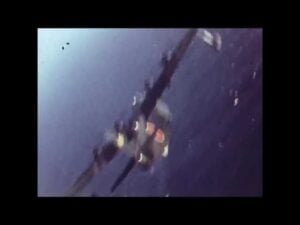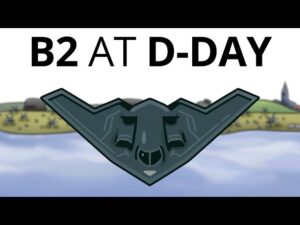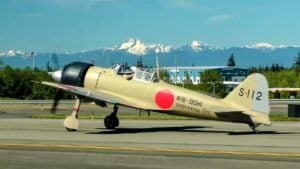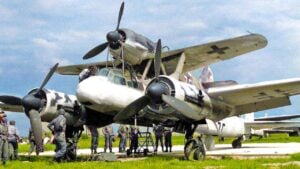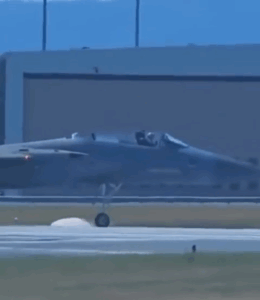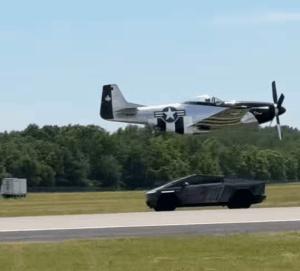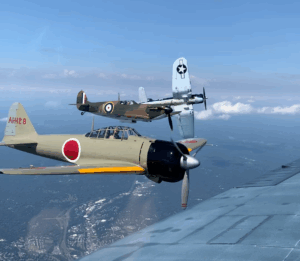How This Underrated British Aircraft Helped Win The Pacific War
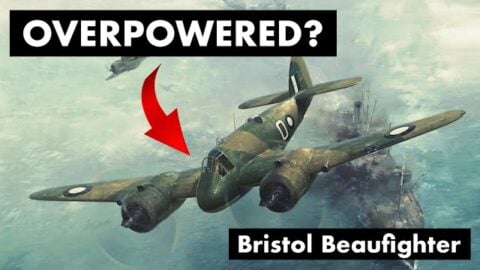
YouTube / IsonzoEnjoyer
The Bristol Beaufighter, Britain’s formidable twin-engine heavy fighter, carved out a fearsome reputation in the Pacific Theatre of World War II. Combining speed, durability, and heavy firepower, it proved deadly in roles from night interception to maritime strikes. Its finest hour came in March 1943 during the Battle of the Bismarck Sea, when Australian Beaufighters spearheaded low-level strafing and rocket attacks that shattered a Japanese convoy.
In March 1943, in the Bismarck Sea in the Southwest Pacific, a Japanese convoy transporting nearly 7,000 troops departed to reinforce their garrison in New Guinea. Their mission? To deliver crucial reinforcements and supplies. However, little did they know that their every move was being monitored. Allied reconnaissance aircraft have spotted the convoy, and codebreakers have confirmed its intentions. This set the stage for a coordinated attack that involved over 150 US and Australian planes.
Among the Allied aircraft participating in the assault is the formidable Bristol Beaufighter. It was armed with four 20mm Hispano cannons, four 7.7 wing-mounted Browning machine guns, and was capable of carrying bombs, rockets, and even torpedoes.
The Beaufighter
Why is this British aircraft so effective in WWII, and how did it leave such a lasting impact on the war effort? Designed to address the RAF’s urgent need for a long-range, multi-role aircraft, the Beaufighter emerged as a solution to the limitations of existing fighters such as the Hurricane and Spitfire. While these single-engine aircraft excelled in many ways, the RAF needed a long-range fighter that could operate at night and in adverse weather conditions.
The team at the Bristol Airplane Company adapted the design of an existing torpedo bomber, retaining its wings, tail assembly, and undercarriage while replacing its less powerful Bristol Taurus engines with two 600 hp. Bristol Hercules engines. This transformation gave birth to a twin-engine aircraft with a heavier frame, greater firepower, and advanced radar capabilities.
A Gamechanger
The resulting Beaufighter was a game-changer, allowing speed, durability, and firepower in a single platform. Its exceptional versatility allowed it to perform effectively in different combat missions. It first entered service in 1940 and was excellent in night fighting roles, where it played a key role in intercepting and destroying German bombers during the Battle of Britain. Its long-range and rugged design made it particularly effective in defending the skies of the UK and later in offensive operations.
As the war progressed, the Beaufighter underwent continuous development. The Mk. VI variant fitted with upgraded Mk. VI engines became one of the most widely produced models with over 1,000 units built. This version saw extensive use in the Mediterranean, where it excelled in encountering German and Italian forces targeting enemy shipping. Also, the Mk. 10 variant introduced enhancements for longer range with a more powerful Hercules Mk. 17 engines and modifications such as additional fuel tanks.
It was a key player in the Battle of the Atlantic, successfully sinking numerous German U-boats. The Mk. 21 was the last variant of the Beaufighter built under license in Australia. Its engines were upgraded to provide better performance in the tropical environment of the Pacific. The Mk. 21 was used extensively in the Southwest Pacific campaign, where it was utilized in both fighter and ground attack roles, notably in attacks against Japanese shipping and airfields.
Impact on the War Effort
The Beaufighter’s versatility and devastating firepower would be on full display during the Battle of the Bismarck Sea in March 1943. On March 2nd and over two days, Allied Forces conducted relentless attacks on the Japanese convoy. Higher attitude B-17s dropped their bombs from 7,000 ft. but faced tough resistance from Japanese Zeros.
On March 3, 1943, in the late morning, 13 Beaufighters of the RAF’s 30th Squadron executed a daring attack, approaching the convoy at a low level in preparation to launch torpedoes. But there were no torpedoes. The Beaufighters unleashed their guns and strafed the lined-up ships in devastating fashion. The battle was a calamity for the Japanese- nearly the entire convoy was destroyed. Eight transport ships were sunk, and four destroyers were sunk.
Only about 1,200 troops reached the garrison in New Guinea. The loss of critical supplies, including large quantities of aircraft fuel being transported, severely hampered Japanese efforts in the region. Moreover, Allied casualties were minimal, and only one Beaufighter was lost during the engagement.
Gen. Douglas MacArthur called the Allied victory in the Bismarck Sea, “one of the most complete and annihilating combats of all time.” The Beaufighter’s impact on WWII cannot be overstated. From the skies over Britain to the waters of the Atlantic, to the jungles of the Pacific.














